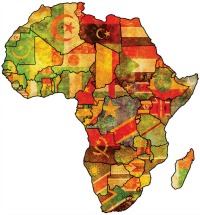 Africa is a huge continent, comprised of 54 different countries and over 1.2 billion people speaking more than 1,500 official languages. Within the region, any given country is vastly different from the next—but investment opportunities abound within many expanding markets.
Africa is a huge continent, comprised of 54 different countries and over 1.2 billion people speaking more than 1,500 official languages. Within the region, any given country is vastly different from the next—but investment opportunities abound within many expanding markets.
Geographically, the broadest distinctions are between the North African and Sub-Saharan African (SSA) countries. It is within SSA where the most dramatic economic changes have occurred since the turn of the century, when rising commodity prices (particularly oil) played a key role in pushing several countries’ GDP growth rates into double-digit territory.
Within SSA, further geographic distinctions exist between major integrated trade communities. Among these, the East African Community (Ethiopia, Kenya, Mozambique, Tanzania and Uganda) is more economically diverse and relatively well-integrated. Still, each country faces a unique set of circumstances and it’s essential to pay close attention to the mantra “all real estate is local.”
Change can be swift. Beginning in 2014, a steep fall in oil prices and other commodities put a serious dent in the economic growth of major exporting countries, like Nigeria and Angola. Still, there are many reasons to remain optimistic about Africa.
This issue of Global Perspectives provides an overview of the most significant and recent developments on the continent—facts that every global real estate professional should know, regardless of whether you plan to have direct involvement in African markets.
You’ll also find snapshots of four countries—Ghana, Nigeria, South Africa and Kenya— which help illustrate the significant differences between nations across the continent.








